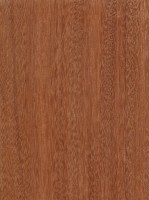 |
Common Name(s): Santos Mahogany, Cabreuva Scientific Name: Myroxylon balsamum Distribution: Southern Mexico and Central and South America Tree Size: 65-100 ft (20-30 m) tall, 2-3 ft (.6-1.0 m) trunk diameter Average Dried Weight: 57 lbs/ft3 (915 kg/m3) Specific Gravity (Basic, 12% MC): .74, .91 Janka Hardness: 2,400 lbf (10,680 N) Modulus of Rupture: 21,570 lbf/in2 (148.7 MPa) Elastic Modulus: 2,380,000 lbf/in2 (16.41 GPa) Crushing Strength: 11,680 lbf/in2 (80.6 MPa) Shrinkage: Radial: 3.8%, Tangential: 6.2%, Volumetric: 10.0%, T/R Ratio: 1.6 |
Color/Appearance: There is a fair degree of color variation between boards of Santos Mahogany, ranging from a lighter golden brown to a darker purplish red or burgundy. The color tends to turn more red/purple with age. Quartersawn sections can show a striped or ribbon pattern.
Grain/Texture: Grain is usually interlocked, with a medium to fine texture. Good natural luster.
Endgrain: Diffuse-porous; large pores in no specific arrangement, few; commonly in radial multiples of 2-3; reddish brown heartwood deposits common; growth rings usually indistinct, sometimes distinct due to discontinuous bands of marginal parenchyma; narrow rays not visible without lens, normal to fairly close spacing; parenchyma vasicentric and confluent.
Rot Resistance: Rated as very durable in regards to decay resistance, with mixed reports on susceptibility to insect attack.
Workability: Santos Mahogany has a noticeable blunting effect on cutting edges. Working characteristics are rated as fair to poor, on account of both its density and its interlocked grain. Staining or gluing can sometimes be problematic, though the wood finishes well.
Odor: Santos Mahogany has a very distinctive spicy scent when being worked. Trees from the Myroxylon genus are used to make Balsam of Peru, an ingredient used in perfumes.
Allergies/Toxicity: Although severe reactions are quite uncommon, Santos Mahogany has been reported to cause skin and respiratory irritation. See the articles Wood Allergies and Toxicity and Wood Dust Safety for more information.
Pricing/Availability: Should be in the mid-range for an imported timber; comparing similarly to other exotic hardwoods used in flooring, such as Ipe.
Sustainability: This wood species is not listed in the CITES Appendices or on the IUCN Red List of Threatened Species.
Common Uses: Flooring, furniture, interior trim, and heavy construction.
Comments: Despite its name, Santos Mahogany is not really related to true Mahogany (Swietenia genus), nor is it even in the Meliaceae family, as is the case with African Mahogany (Khaya genus) and Spanish Cedar (Cedrela odorata). Santos Mahogany can have a Mahogany-like appearance, though it is typically much denser, harder, and stronger than true Mahogany—and also much more difficult to work.
Santos Mahogany trees, sometimes called Balsamo, are used in the production of the substance called Balsam of Peru, used as a fragrance in perfumes.
 |
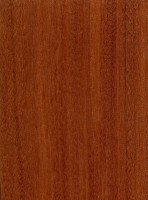 |
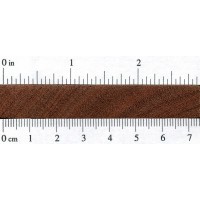 |
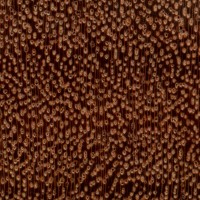 |
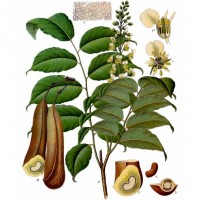 |


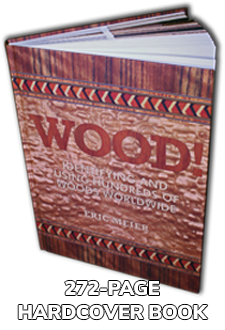


Is this the same wood as above? Where would I be able to find the model number. I need to order more for some damaged pieces in the wood.
Yes, that’s the same stuff. If only all wood ID was this easy!
I have sealed santos mahogany (2 years old)that got some scratches. Does anyone know how I can fix it?
I got what I think is this wood from a flooring company that was selling off some old stock that had been sitting in a warehouse. They knew that it was definitely South American. The boards were beautiful, long wide, quarter sawn. Darker than the sample, certainly interlocking grain. I resawed it to use for guitar back and sides, I think it should be terrific. It did not have much odor when I was working it though. The boards had been sitting in the warehouse for at least 10 years so maybe it had dissipated. Given that it is very… Read more »
Do you have any pictures of the wood in question, particularly the endgrain?
Initially I would say that it’s probably not santos mahogany. Odor in most woods really only diminishes if the wood is heavily weathered in exterior conditions, or if it is merely just a light sanding of the outside of the wood. If you are sawing into dried solid lumber, there should be a noticeable scent. The world of tropical hardwoods is quite vast, and many of them are not even on this website (yet). It could be almost anything.
here are a face (sanded) and an endgrain
Hi Eric,
So with the pics do you have any suggestion as to what it is?
I can’t tell much from the endgrain photo because it is
1. not finely sanded to bring out enough detail
2. not zoomed in enough
3. insufficient lighting.
Is it possible to get an offcut and get an exact weight and density measurement? In my experience, most people grossly overestimate the wood’s weight, so it would be helpful to know exactly how heavy the wood is.
HI, Here’s a couple of pics with better sanding (180 grit) and hopefully better lighting and detail. I measured the density at 804.8 My board was 34 3/4 inch (882.65mm) by 5 inches (127mm) by 13/16 (20.63mm). It weighed 4.1 lb. 65.67 oz (1862 g). That puts it in the same range as rosewood if I’m not mistaken. Most people do overestimate wood’s weight – I spent many days unloading train cars full of, mostly mahogany, into kilns to dry. I spent other days milling the dryed wood into blocks and pieces that went into furniture. I spent about a year… Read more »
It appears that the pores are fairly numerous, with little to no visible parenchyma (that may be a limitation of the photos). I don’t think this is a rosewood. To me, this wood looks closest to cumaru, and the similar-looking ipe. There’s probably a host of other tropical hardwoods that have similar anatomy as well.
Thanks, Eric, not Ipe I’ve used loads of that but I’m not familiar with Cunard, that looks like a possibility.
I experienced the hardness when using pocket holes. Had to pre-drill the receiving side of the wood. Great finish, but hard to work. Pre-drill all screws or you will break them off.
Hi, I am slightly allergic to Balsam of Peru. Will it cause any allergic reaction if I live in a house with Santos Mahogany wood floors? Thanks.
Assuming someone were so inclined, would this wood be too dense to serve as a canoe paddle? Being 90% as dense as water, I can imagine a pregnant pause if it were dropped overboard, at least until it popped back up to the surface.
Thoughts?
It won’t float back up. And it being so heavy it will tire your arm and shoulders. Stick to a cedar paddle or some other wood that is light
This very dense wood. I think it would be a poor choice for a paddle; unless you are trying to improve your upper body strength. If the paddle is for decoration, then it could be very beautiful.